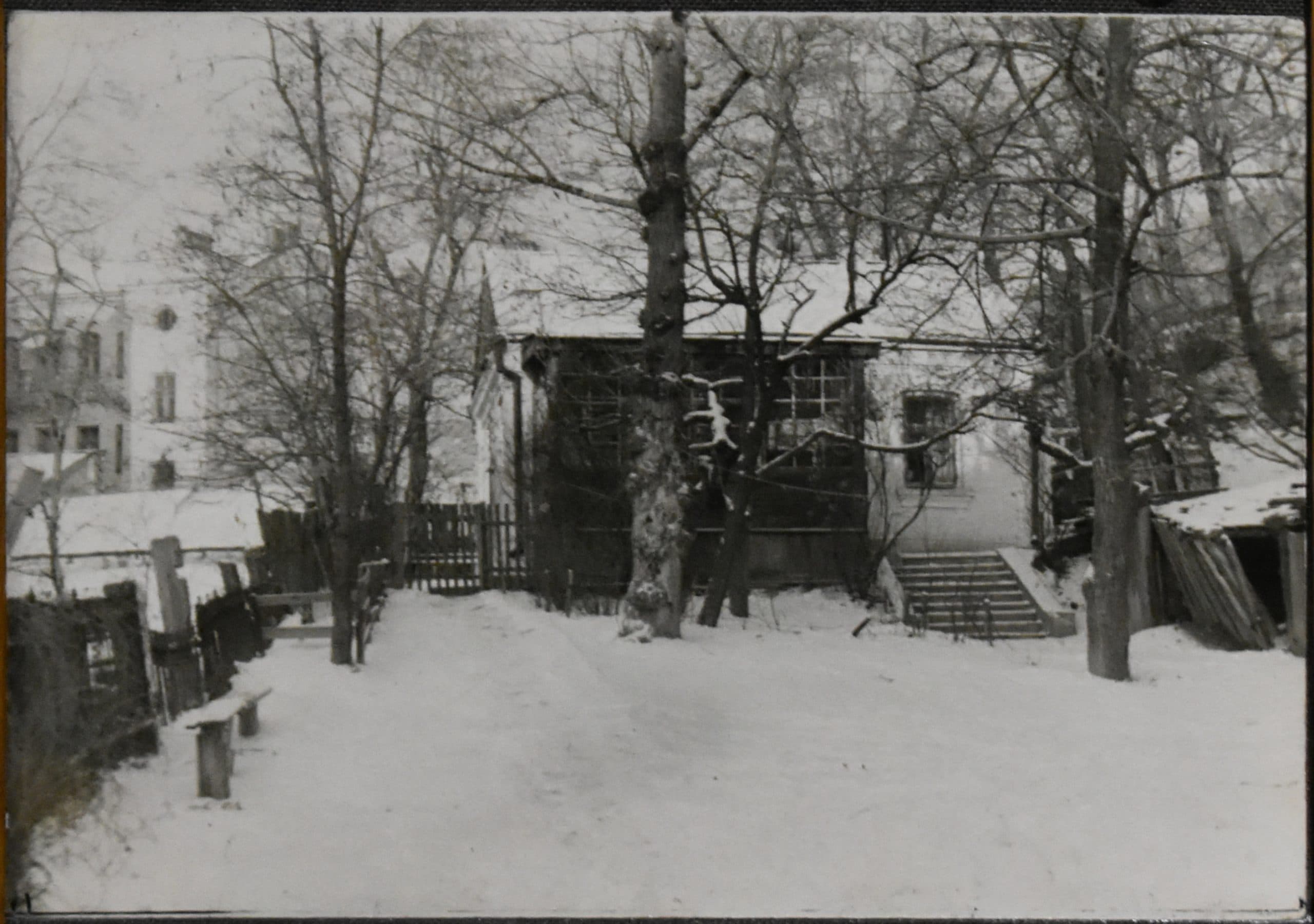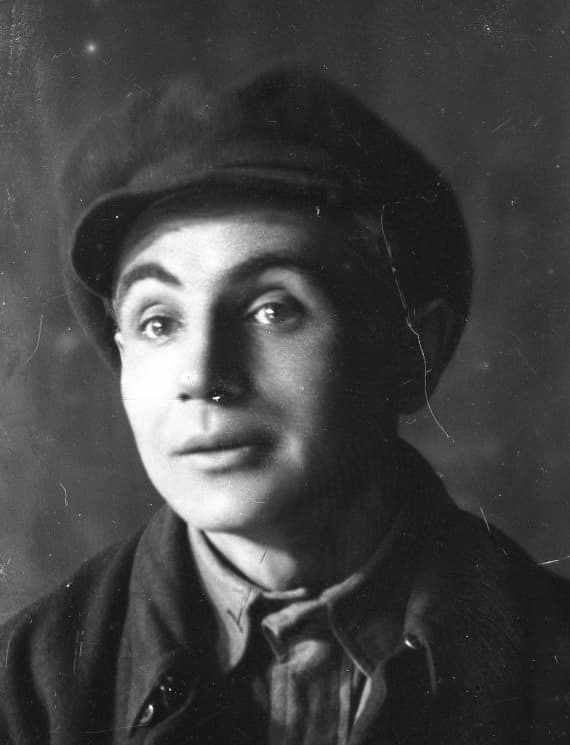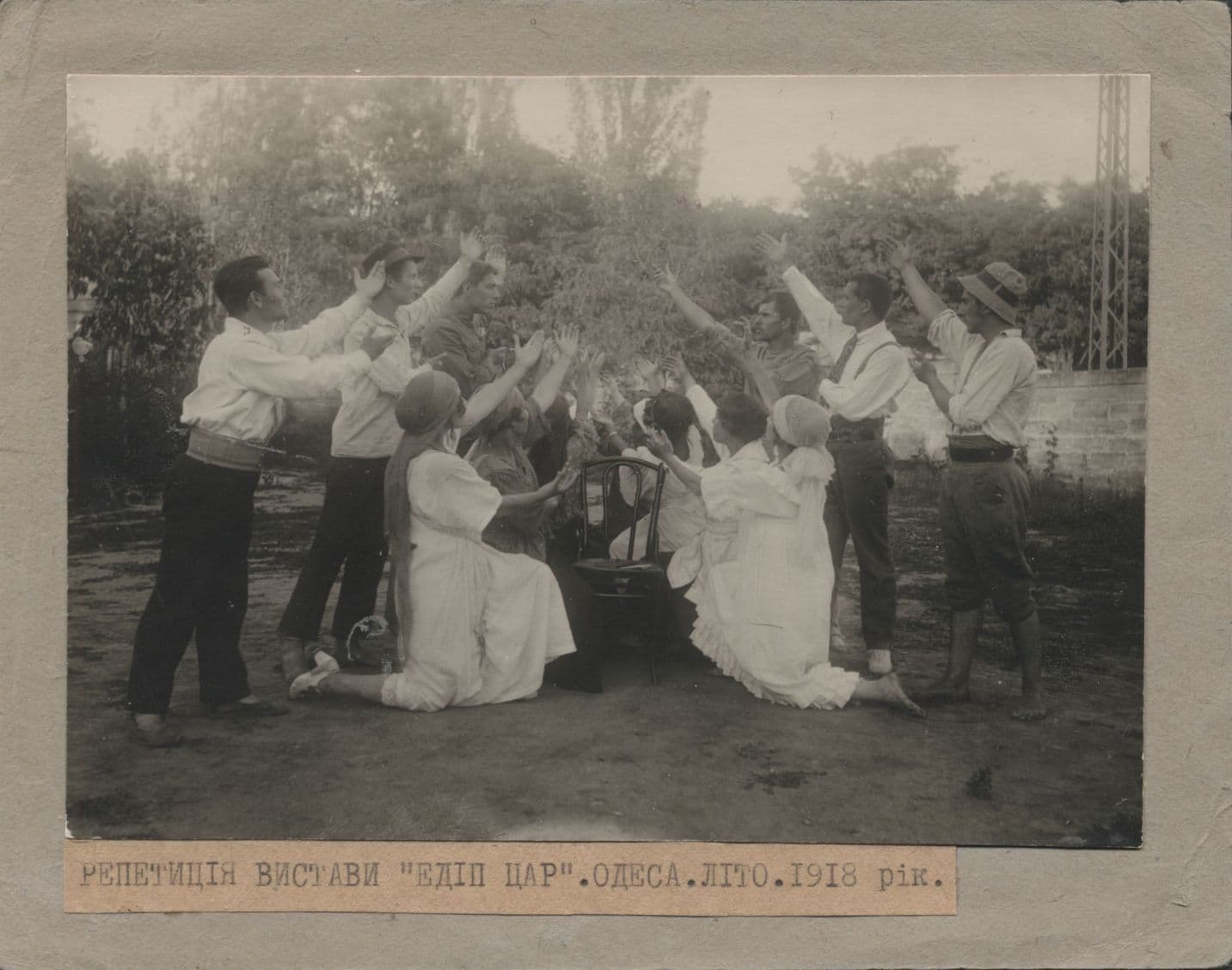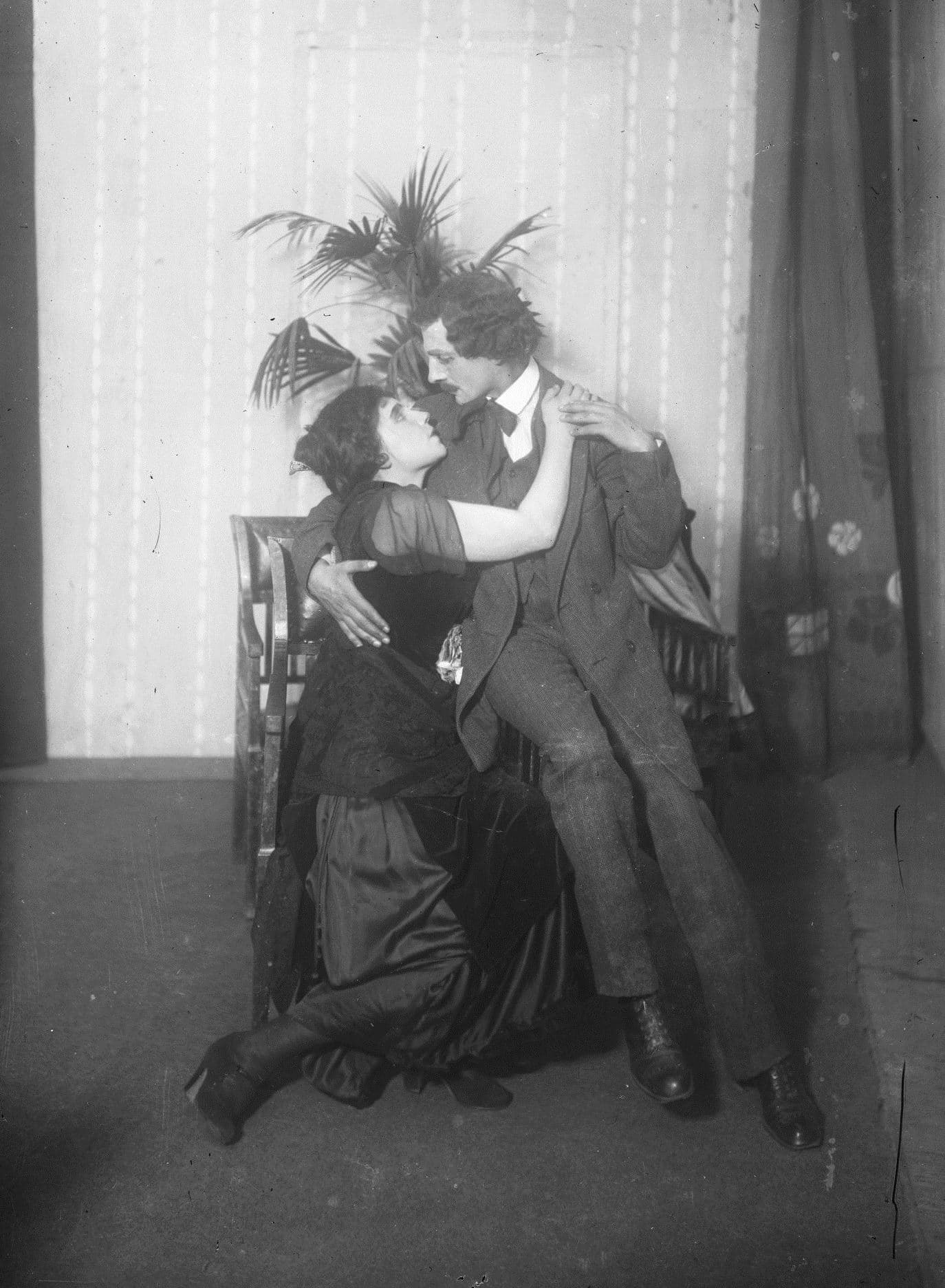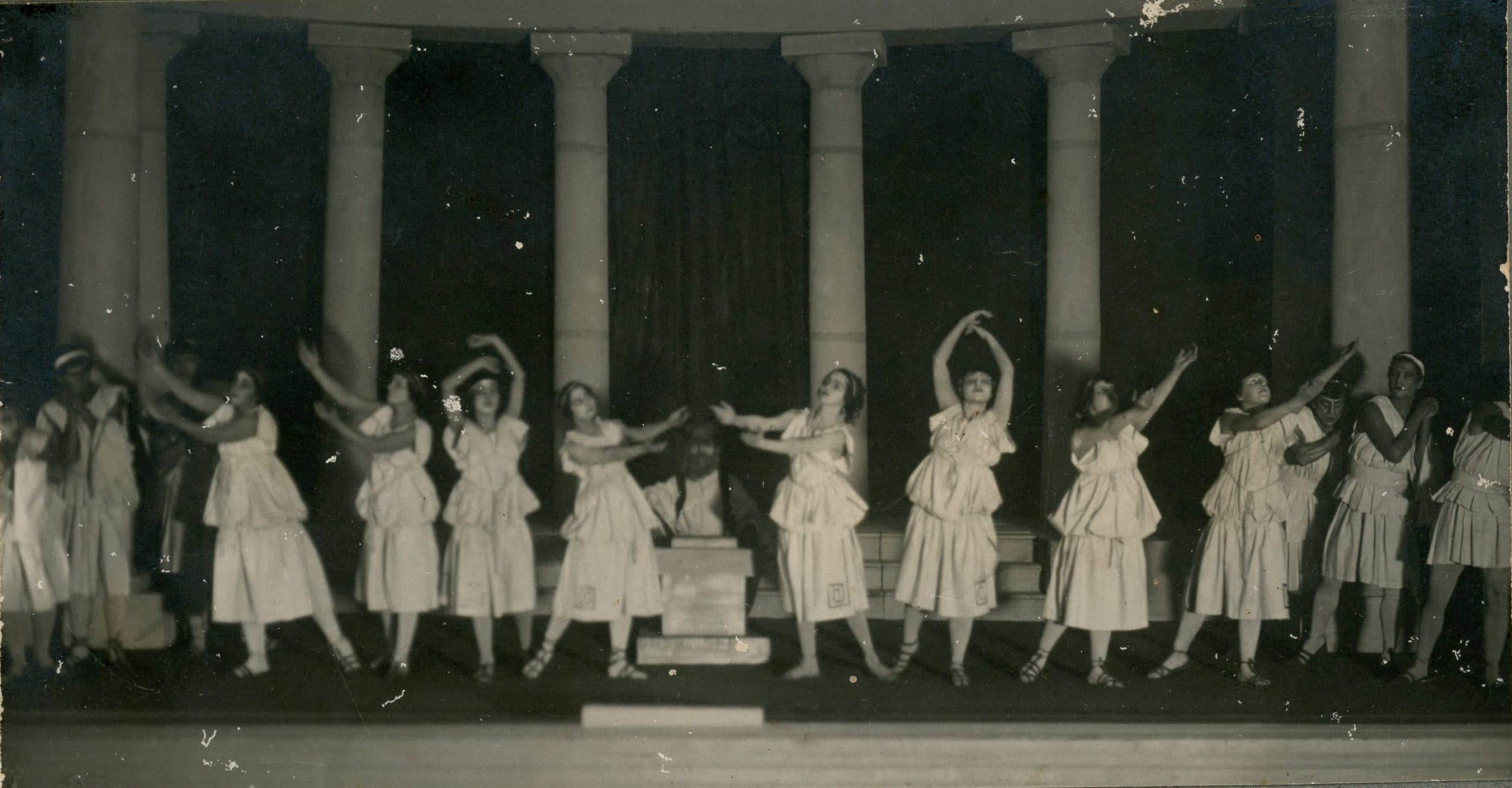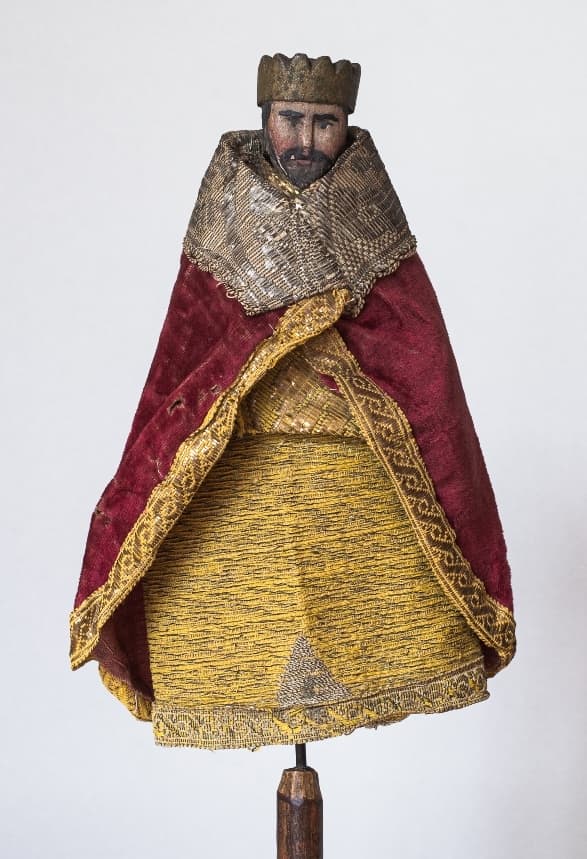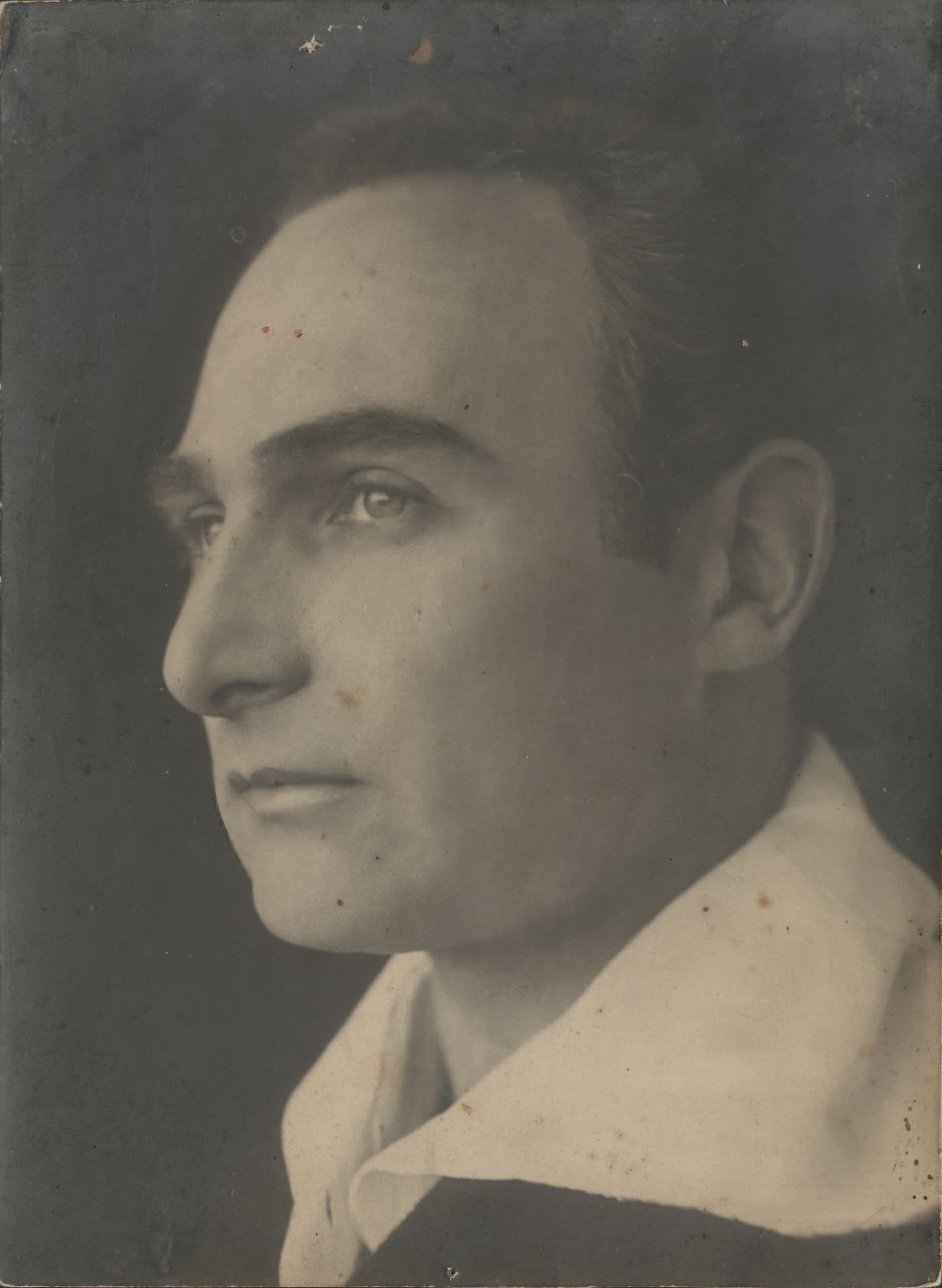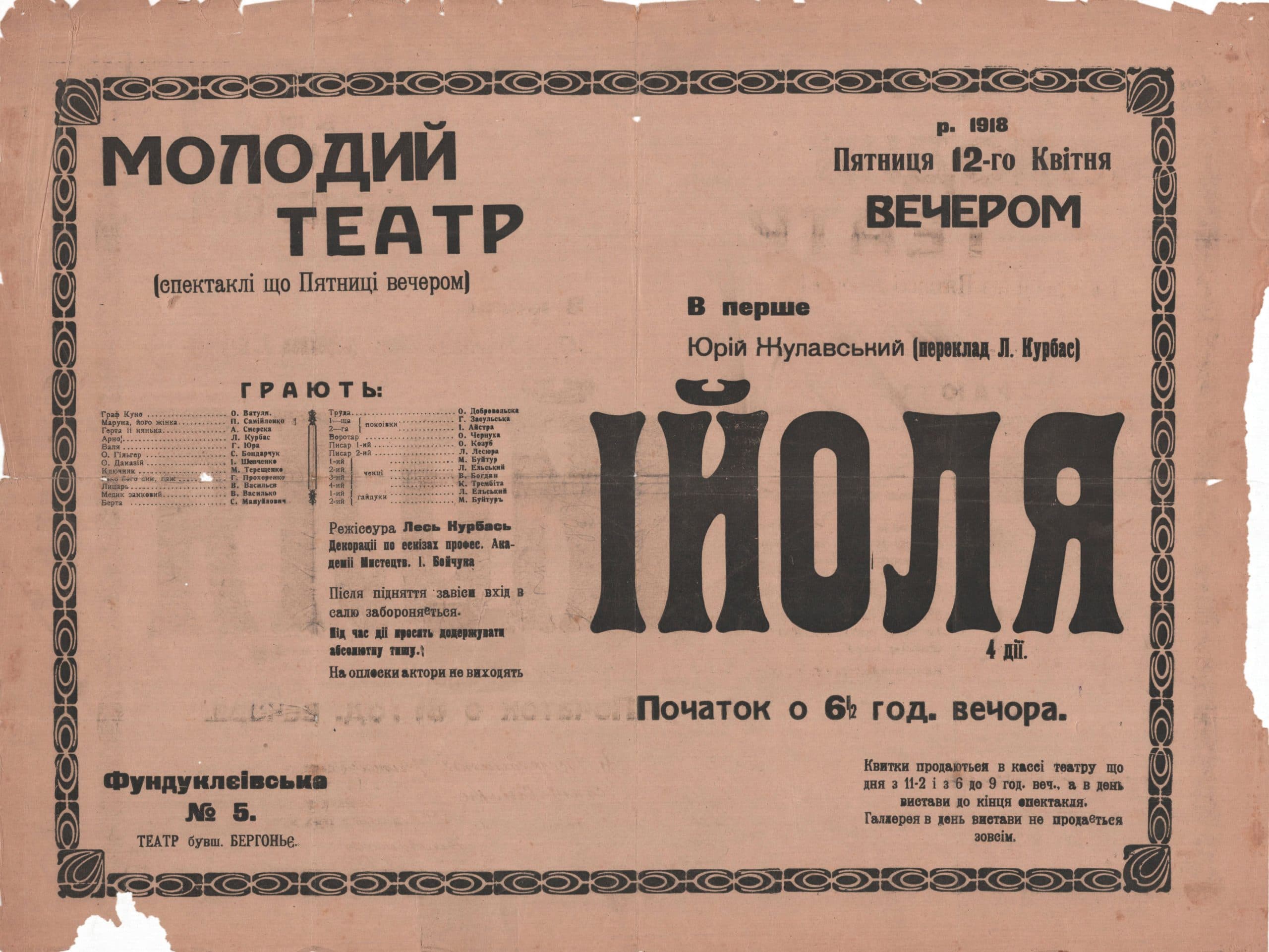The Young Theater, originally called Society of Faith, officially opened in Kyiv in September 1917, but Les Kurbas had started the Young Theater studio when he had just arrived in Naddniprianshchyna Ukraine back in May 1916. Its members included actors of the Maria Sadovska Theater, students of the Mykola Lysenko Music and Drama School, and amateurs such as S. Bondarchuk, V. Vasyliev, O. Vatulia, O. Dobrovolska, S. Manuilovych, V. Onatska, P. Samiilenko, M. Tereshchenko, Y. Shevchenko, and others. This group of young actors initially rehearsed in private apartments before moving to a saddlery workshop in spring 1917. Their first public performance in March 1917 was a symbolic depiction of Revolutionary Movement. On May 7 they put on a full play – Volodymyr Vynnychenko’s Bazar – at the summer stage in the Kyiv suburb of Sviatoshyno.
The Young Theater opened its second season on September 24, 1917 with Vynnychenko’s Black Panther and White Bear at the Bourgogne Theatre (today the Lesia Ukrainka National Academic Theater of Russian Drama). Kurbas’s directing, his artistry in the role of Kornii, the coordination of the lead actors, and Mykhailo Boychuk’s sets drew the attention of the audience and professional community alike.
During its first year, the Young Theater didn’t have any financial support or its own premises and performed mainly on weekends at the Bourgogne Theater. Nevertheless, new shows were constantly being added to their repertoire: the 1917-1918 season saw the premiere of O. Oles’s Dramatic Etudes, Max Halbe’s Jugend, Jerzy Żuławski’s Ijola, and others. Actors such as V. Kalyn, F. Lopatynskyi, S. Semdor, V. Chystiakova, H. Yura, and others joined the troupe.
Les Kurbas published the main postulates of the Young Theater – as a group of like-minded people creating art of a new figurative quality – in the article “Young Theater. Genesis – Tasks – Directions” in September 1917. Under his direction, the theater updated its repertoire, adhered to high esthetic standards, and followed the studio principle.
Laboratory work became central to the Young Theater. The troupe, under the leadership of Les Kurbas and other artists, mastered the principles of creating new modernist art, studied art styles and trends, experimented in acting and sculpture, visited museums, participated in discussions about art. A year after the creation of the theater, in the fall of 1918, Kurbas published “Theatrical Letter” – a manifesto about a new kind of actor: the so-called Clever Harlequin.
In summer 1918, the Young Theater toured in Odesa, where, in addition to putting on shows they worked on the premiere of Sophocles’s Oedipus Rex (translated by Ivan Franko). After returning to Kyiv, the theater opened its second season at a building on Prorizna Street (now the Kyiv Academic Young Theater) with the first production of an ancient Greek drama in Ukrainian. “There is no Sophocles in the play,” wrote one viewer. “But there is something extremely revolutionary here: there is courage that turns into protest, there is a very interesting attempt at a completely painterly approach to an old tragedy. Lines, paints, movements – this is the meaning given to Oedipus by a talented seeker.” Other premieres of the season include an adaptation of Lesia Ukrainka’s In the Wilderness, Franz Grillparzer’s Woe to the Liar!, Gerhart Hauptmann’s The Sunken Bell, and others.
Besides Les Kurbas, the directors of the Young Theater included H. Yura (Doctor Kerzhentsev by Leonid Andreev, Candida by George Bernard Shaw, among others), S. Semdor (An Enemy of the People by Henrik Ibsen) and Valerii Vasyliev (Tartuffe by Molière). Artists Mykhailo Boychuk and Anatol Petrytskyi worked on the set design, and choreographer and dancer Mykhailo Mordkin improved the actors’ movements.
The Young Theater had a diverse repertoire: from ancient tragedies to Vertep, shown in early 1919. Among the theater’s final productions, performed in March 1919, were works by Taras Shevchenko (The Great Vault, Ivan Hus, a series of lyrical poems). Kurbas had plans to stage Shakespeare’s Romeo and Juliet and Mykhailo Semenko’s Lilith, but in spring 1919 the Young Theater was renamed the First Young Theater of Kyiv and later merged with the Shevchenko First Theater of the Ukrainian SSR.
Les Kurbas’s Young Theater went down in history as the first modern Ukrainian theater. It is rightly considered an esthetic study of the national stage and is recognized as being the most prolific time of collaborative learning for up-and-coming artists Les Kurbas, Mykhailo Boychuk, Vasyl Vasylko, Anatol Petrytskyi, Marko Tereshchenko, Pavlo Tychyna, Mykhail Semenko, Hnat Yura, and many other Ukrainian cultural figures of the 20th century.
